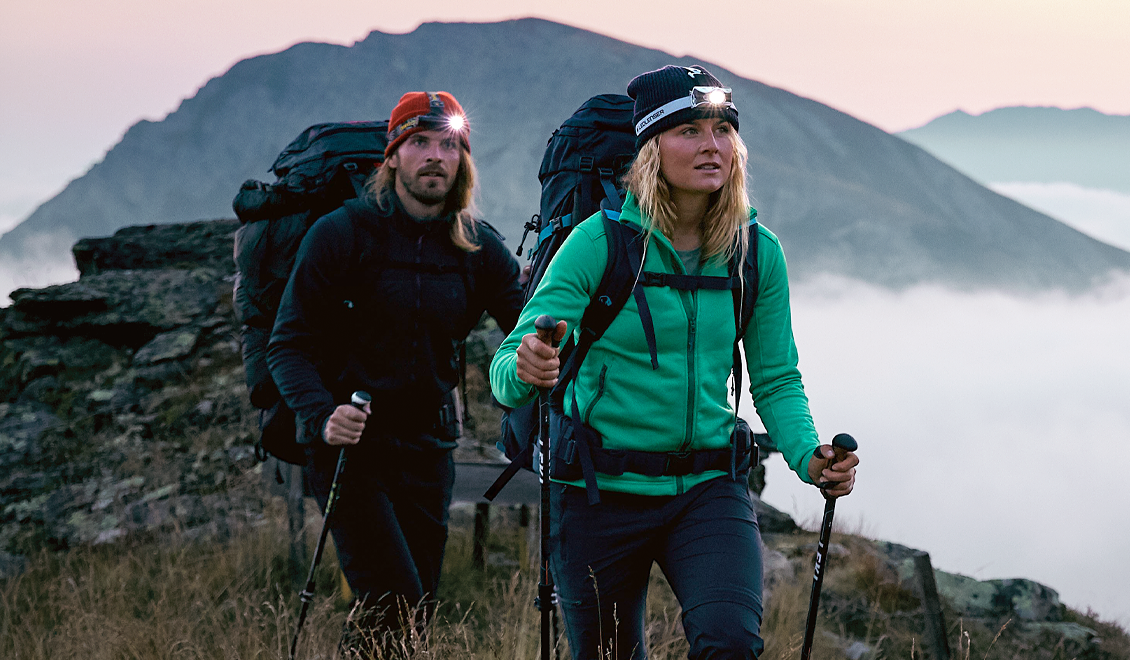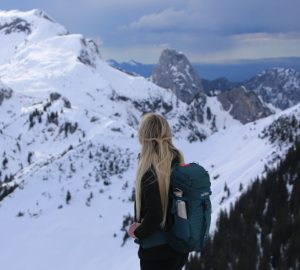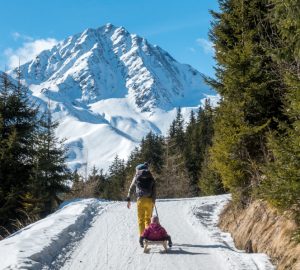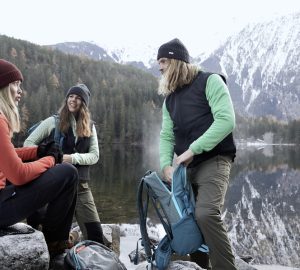Crossing the Alps on foot is the dream of many outdoor enthusiasts. In order to complete the exciting, but also demanding adventure, it is first of all a matter of the right preparation and planning. We explain what you should look out for before your alpine crossing.
If you want to realize the dream of crossing the Alps, you should start planning your tour in good time. Not only the booking of the huts needs some lead time, so that still surely overnight accommodations are free. Also the necessary equipment must be prepared or procured. Depending on your fitness level, you should also start your physical preparation with sufficient advance notice. In addition, it is important to decide on a route that suits your own abilities and preferences. Last but not least, it depends on the right time to start and the course of your hike across the Alps. But first things first.
The right period for a Alpine crossing
The best period for a hike across the Alps is from mid-June to the end of September. Because outside this period most of the huts you need for your overnight stays are closed. Moreover, the snow conditions in the Alps allow a safe crossing only in the summer months.
However, this does not mean that an encounter with snow in the summer months is completely impossible. At higher altitudes – from about 1,000 meters – you can also encounter snow from June to September. This applies to both old snowfields and sudden snowfall. To avoid being surprised by a cold snap with snow, you should always keep a close eye on both the weather forecast and the developments in the sky. Accordingly, changes to your route may become necessary at short notice. In any case, your equipment should be adapted to the possibility of snow. However, if you start from Germany, chances are good that the weather will get better and better on your way south.
Good to know: A reliable weather report for the Alps is provided by the German Alpine Association, DAV. (Link just in German)
The right route for your crossing of the Alps
There are numerous possible routes for crossing the Alps. We have compiled a detailed overview for you in a separate article. The routes are divided into different numbers of daily stages and vary considerably in length and difficulty. The shortest route comprises six stages, the longest lasts several weeks. You should therefore clarify in advance how much time you can bring with you.
More on this topic: Crossing the Alps Part 3: What routes are there?
As far as route planning is concerned, it is always advisable to fall back on proven routes. Here you can rely on a well-developed network of paths with appropriate signposting and find the necessary infrastructure with huts for food and overnight accommodation. Any secret routes require even more thorough planning.
For planning your daily stages, you can use online sources as a guide. There are also apps such as Komoot. However, we recommend that you also use an established hiking guide for your alpine crossing. The advantage: Here you can be sure that a trained mountain guide was involved in the editing and the information is reliable and extensively tested. Unpleasant surprises regarding the quality of the trails as well as the actual duration of individual stages can thus be avoided. An analog hiking map is also an indispensable backup, despite all the technology. Below you will find a list of our recommendations.
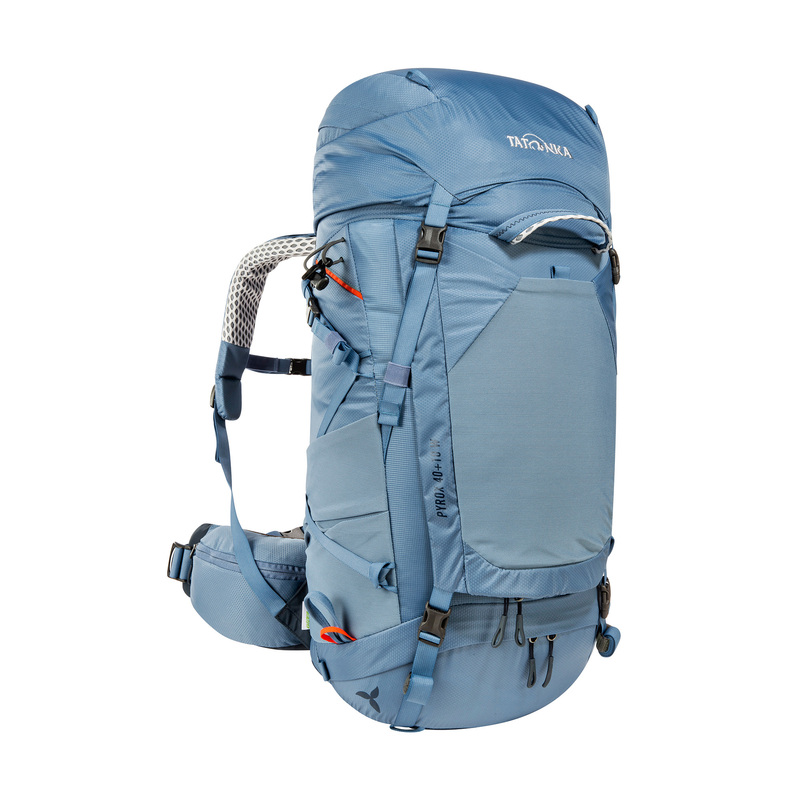
At Tatonka you will find the right backpack for your trip across the Alps. Whether unisex or special women’s model. With adjustable carrying systems that noticeably relieve your back on tour.
Costs for a crossing of the Alps
What a crossing of the Alps costs can vary greatly. The costs depend on the chosen route, the scheduled duration, the choice of accommodation, the equipment needed in advance and your arrival and departure. If you book a guided tour with luggage transport or return service to the valley, the costs are even higher than for a self-planned tour. A rough estimate for a self-organized tour on the long-distance hiking trail E5 with a scope of about seven daily stages is 500 to 1,000 euros. With more stages, the costs increase accordingly. Here is a brief overview:
- Equipment
If you are a regular hiker and trekker in the mountains, you probably have most of the necessary equipment for crossing the Alps. If you have been hiking only occasionally, you may have to pay a few hundred euros for the equipment. However, you should not save money. Without suitable footwear and a comfortably fitting backpack, a hike lasting several days quickly becomes torture. High-quality equipment is therefore worthwhile in the long term. Not least, high quality also promises a longer life. We have compiled a detailed overview of the equipment needed for a crossing of the Alps in a separate article for you. - Overnight stay and food
Ideal for overnight stays on your crossing of the Alps are mountain huts. Here you can expect about 20 to 40 euros per night, although prices vary from hut to hut. With a membership in an alpine club (e.g. the DAV) you can save about ten euros per night in alpine club huts. Alternatively, you can plan your route so that you spend the night in the valley. Here, the range of offers is usually larger and thus also the price range. As a rough guide, you can expect to pay between 350 and 550 euros for an individual crossing of the Alps, which you will need for accommodation and food during the hike. - Arrival and departure
You should also take into account the journey to your starting point and the trip back. Here the costs are individually very different depending on the place of residence and the choice of means of transport. Also the way back to your starting point, whether by public transport or a shuttle service, will be charged.
Fitness and conditional training
A certain level of fitness is essential for crossing the Alps on foot. Not only is there a lot of distance to cover. Especially the meters in altitude that you overcome on the hike are quite demanding – after all, you are carrying a backpack with all your equipment in addition to your own body weight.
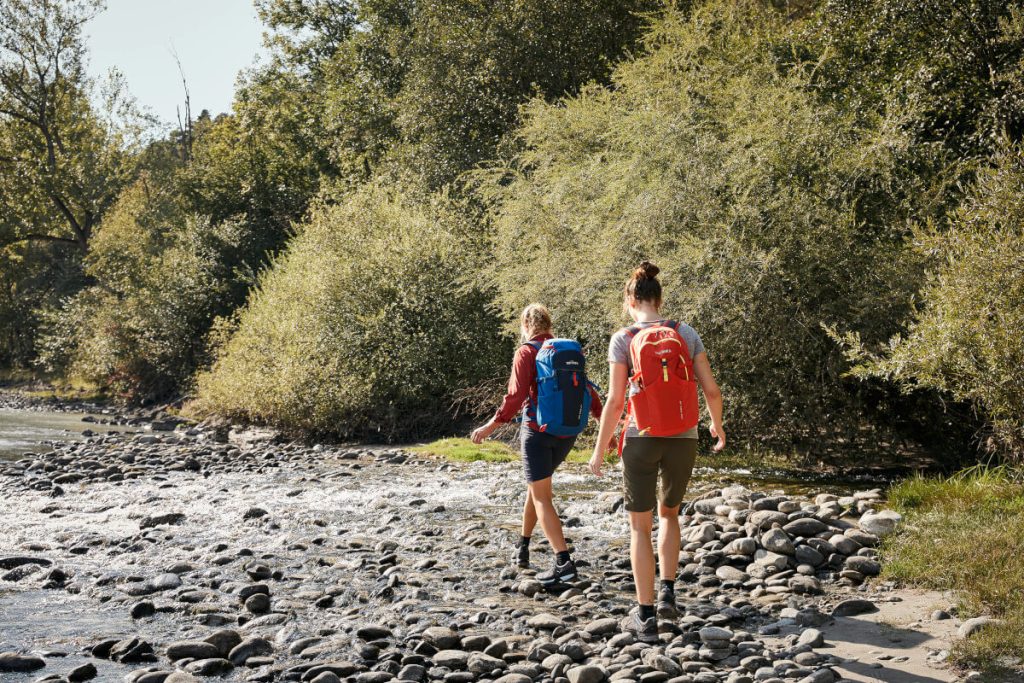
If you have doubts about whether your physical fitness is sufficient for an alpine crossing, it may be advisable to get a medical assessment. But even people who feel fit and exercise regularly should not underestimate the physical challenge of crossing the Alps and prepare accordingly. Here are a few tips for preparation:
- One-day hikes
Take as many day hikes as possible to prepare for an alpine crossing. Make sure that your tours include the appropriate amount of altitude to be able to master the challenge later on. - Mountain hut tours lasting several days
Multi-day hut tours have the advantage that you can prepare under real conditions. Your equipment and the weight of your backpack correspond to what you can expect during your hike across the Alps. This not only strengthens your muscles, it also prepares you for the short recovery periods that come with daily hiking. You can also test your equipment: Do you have everything you need? Is there anything you can leave out to save weight? Are you comfortable with your shoes, trekking poles, etc.? Will your rain jacket hold up? - Running or a quick after-work run
Integrating day hikes or even multi-day hikes into your daily routine is often not easy, depending on your professional and personal situation. Going for a run several times a week is a good addition here. Even a brisk walk over a distance of 20 kilometers can have a good training effect. Include as many climbs as possible in your running or walking tour. After all, it is definitely the meters in altitude that pose the greatest challenge when crossing the Alps. - Integrate exercise into everyday life
Integrating exercise into your everyday life is not only recommended as preparation for a hike across the Alps. If you walk or cycle short distances (preferably in all weathers to toughen up) and prefer the stairs to the elevator, you can improve your own fitness and do something good for the environment as well. - Strength training
Any kind of sport is helpful to strengthen the musculoskeletal system and to be optimally prepared for an alpine crossing, whether jogging, trail running, cycling or swimming. Strength training is also recommended. The weight of your backpack should not be underestimated: If your entire musculature is trained (not only the leg muscles), this relieves your joints and makes it easier for you to shoulder your backpack.
Emergency planning
In case of an emergency, quick help is often crucial. It is important to know in advance which emergency numbers are valid in the respective region and, if necessary, to prepare an emergency plan in order to be able to react quickly in case of an emergency. A well-stocked first aid kit should definitely be part of your equipment.
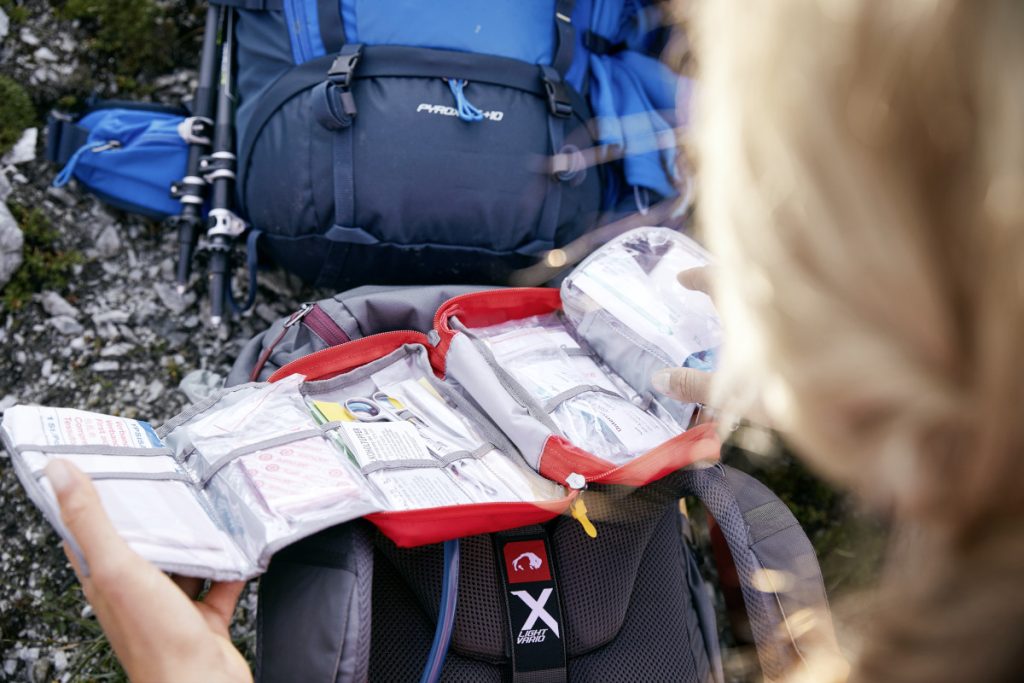
Hiking guides and maps – our recommendation
It is worth investing in a good hiking guide before crossing the Alps. As already mentioned, experienced professionals are involved in their preparation – you can benefit from this experience.
You can also find helpful information at alpine clubs, such as the German Alpine Club (DAV). Here, not least, there are guided tours, for all those who feel safer in a group with an experienced mountain guide.
Tip: Here you can find more articles of our series about crossing the Alps on foot:




